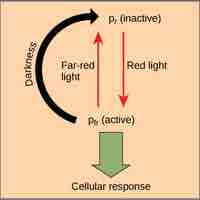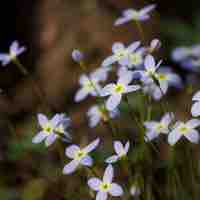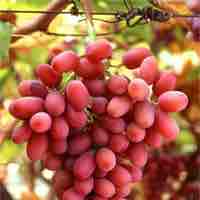Section 7
Plant Sensory Systems and Responses
By Boundless
Plants respond to light stimuli by growing, differentiating, tracking the time of day and seasons, and moving toward or away from the light.

Plants use a phytochrome system to sense the level, intensity, duration, and color of environmental light to adjust their physiology.

The protein-based receptors, phototropins and cryptochromes, sense blue light to alter plant physiology accordingly.
Plant shoots grow away from gravity, toward sunlight, while plant roots grow into the soil in the direction of gravity.

All physiological aspects of plants are affected by plant hormones (chemical messengers), including auxins, cytokinins, and gibberellins.
All physiological aspects of plants are affected by plant hormones, including abscisic acid, ethylene, and nontraditional hormones.
Plants respond to wind and touch by changing their direction of growth, movement, and shape.